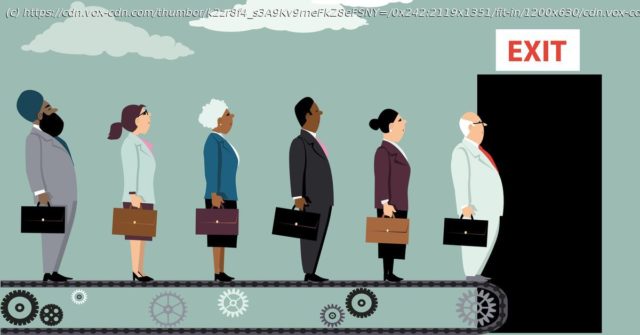The main growth in quit rates is coming from more tenured workers in industries like finance and tech.
With prices soaring and analysts predicting a recession on the horizon, it might not seem like the best time to quit your job. But that’s not keeping American workers, especially older, more tenured ones, from doing so. Higher-paid workers are increasingly quitting their jobs, as the Great Resignation — also known as the Great Reshuffle — enters its second year. Earlier in the pandemic, the trend was led by younger, less-tenured workers in low-paying industries like retail, food service, and health care. Now, the main growth in quit rates is coming from older, more tenured workers in higher-paid industries like finance, tech, and other knowledge worker fields, according to data from two separate human resources and analytics companies. These workers say they are searching for less tangible benefits like meaning and flexibility. That changing composition of who is quitting paints an increasingly complicated picture of the state of work in America and suggests that while quit rates had decreased slightly from their highs last year, the phenomenon is not going away just yet. Indeed, new Bureau of Labor Statistics data for March, the most recently available month, saw the overall quit rate return to its previous high of 3 percent of all employment, with a record 4.5 million people leaving their jobs that month. More than half of the growth in quits compared to a month earlier came from the higher-paying business and professional services sector. “The Great Resignation is almost like a train, where it’s built all this momentum and it’s hard to slow down, but certain workers are getting off the train and new workers are coming on,” said Luke Pardue, an economist at Gusto, which provides payroll, benefits, and human resource management software to small- and medium-sized businesses. Rates of quits are always highest among younger, less senior workers — those who tend to be less invested in their jobs and whose lives are less stable. This was true during the early stages of the pandemic when these workers quit their jobs amid heightened demand to eke out better wages and conditions elsewhere (though those gains are unlikely to be permanent).






